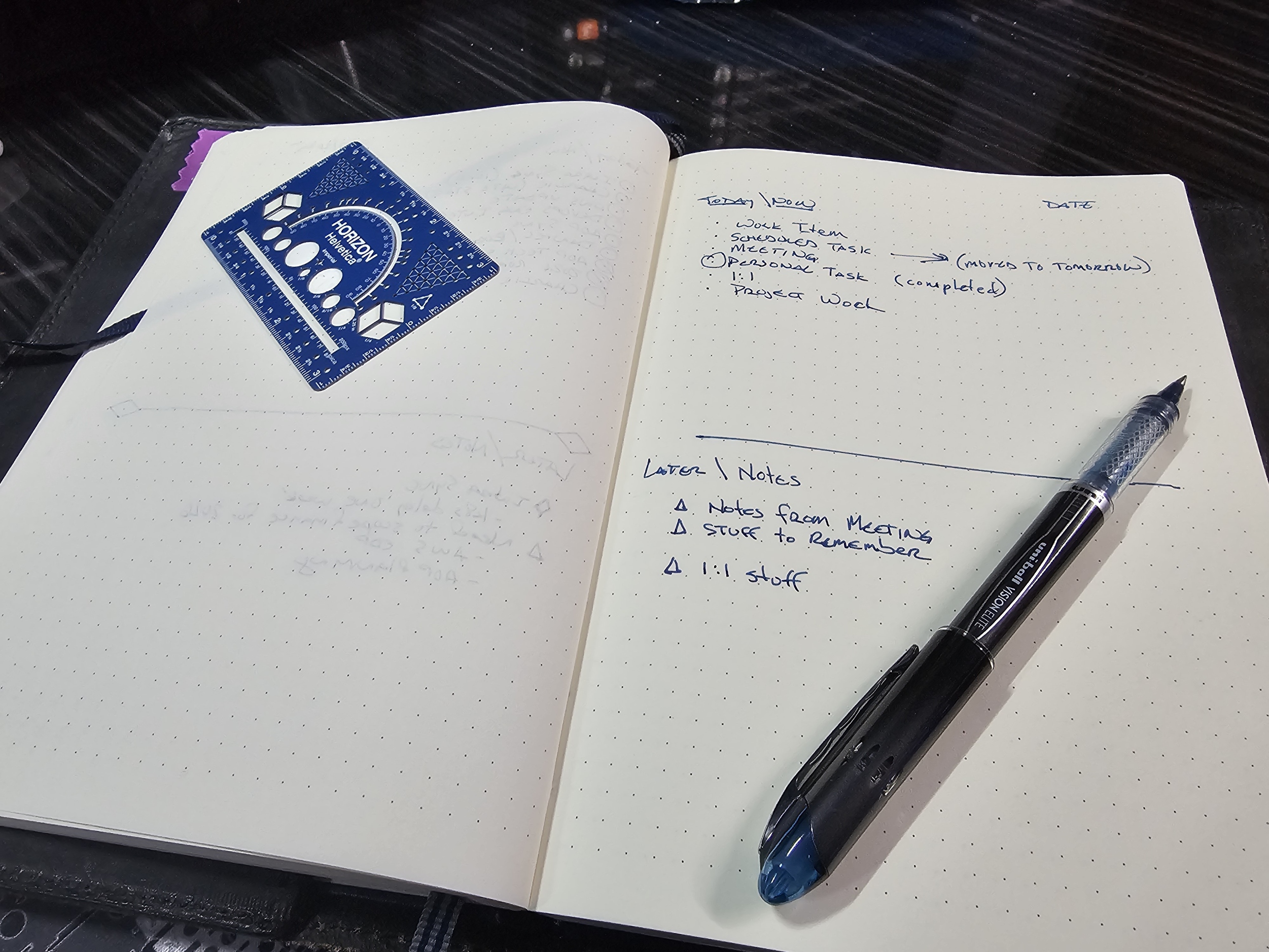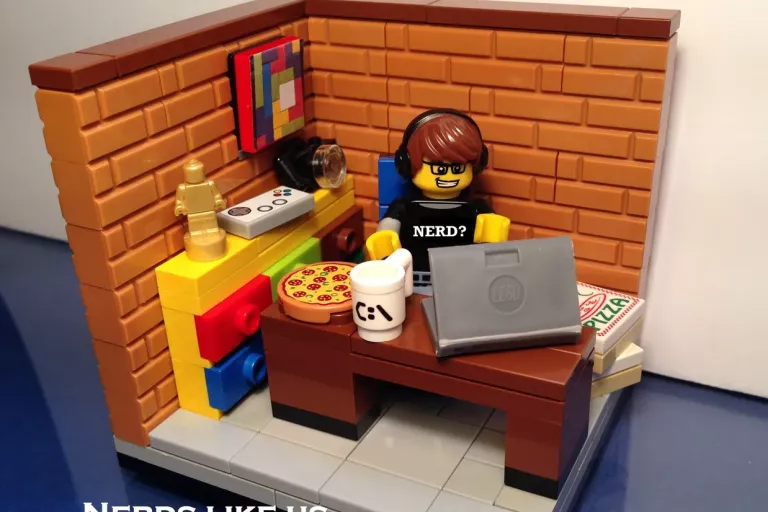Bullet journaling is powerful, but let’s be real: most engineers and neurodivergent professionals don’t have the time (or executive bandwidth) to maintain a complicated system. We’re not trying to design art projects in our notebooks — we’re trying to keep projects, tasks, and development goals from falling off the radar.
What we need is minimum viable structure: something that works on bad days, adapts to chaos, and doesn’t require ten apps or an hour of setup. I’ve iterated across literally hundreds of variations, and this is the system I’ve settled on. This system provides the minimal structure required to address the need: one notebook, one page per day, with inline meeting notes where you need them.
Why This Works for ADHD (and Busy Engineers)
One place only. All your notes, tasks, and meetings live in one notebook. No juggling between Jira, Slack threads, and half-dead Notion pages.
Low friction. One page per day, dated in the corner. No formatting rabbit holes.
Forgiving. If you skip a day, just start fresh on the next blank page. No backlog guilt.
Traction, not perfection. Your notebook doesn’t have to be pretty — it’s scaffolding for your brain so you can focus on solving problems.
The Page-Per-Day Layout
Every day gets a new page.
Step 1: Date in the upper right.
Write today’s date at the top right corner. Simple. Flipping back later is painless.
Step 2: Split the page into two zones.
Today / Now (top half):
Deadlines, meetings, quick tasks
Critical reminders (“deploy at 4 p.m.”, “review PR #1342”)
Symbols keep it tight:
• = task
✦ = critical/urgent
→ = carried forward
∆ = note / idea
Later / Notes (bottom half):
Observations from troubleshooting
Lessons learned from debugging
Ideas for improving team processes
Career reflections or “add to 1:1 with manager” items
Step 3: End-of-Day Sweep.
Circle anything undone and rewrite it on tomorrow’s page. Don’t punish yourself — carrying tasks forward is part of the system.
Weekly Reset
Once a week, take a fresh page and mark it Weekly Reset.
Pull forward only the tasks and goals that still matter.
If something has been carried more than twice and hasn’t been acted on, either drop it or escalate it. (If it’s real, it will come back. If not, let it go.)
Jot down big-picture goals for the week: learning objectives, key project milestones, or professional development focus areas.
This is where tactical notes connect to strategic growth.
Inline Meeting Notes
Meetings are where details get lost. Don’t bury action items in Slack threads and DMs. Instead, give them their own inline page.
Meeting Title
Date (upper right)
Attendees: who was in the room (or call)
Agenda / Topics: the key bullets
Notes: discussion points, decisions, diagrams if needed
Action Items: anything assigned to you goes back into Today / Now
Example:
Design Review: API Auth
Sept 18, 2025
Attendees: Eng team, Security lead
Agenda: finalize token refresh flow
Notes:
Security flagged refresh window as too long
Proposal: 15 min window with background refresh
Action Items: update RFC draft, run perf test → (carried forward)
By writing action items twice — once in the meeting notes, once in your daily page — you better guarantee they won’t slip.
Why Keep It Ugly
Engineers love elegant systems, but ADHD brains need practical ones. If your notebook gets too polished, you’ll hesitate to use it.
Ugly pages = momentum.
Messy bullets = captured thoughts.
Crossed-out junk = proof of progress.
Your system isn’t a portfolio piece. It’s a survival tool.
The Payoff
This isn’t about becoming a productivity robot. It’s about:
Tracking daily work without losing sight of long-term goals
Catching action items before they evaporate
Building a habit loop that’s light enough to survive stress and deadlines
Giving your professional development the same attention as your sprint board
It won’t look glamorous. But it will keep your projects, growth, and sanity moving forward — which is a far better ROI than a color-coded notebook you never touch.
Because at the end of the day, neurodivergent professionals don’t need complex systems. We need systems that stick.




